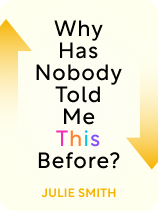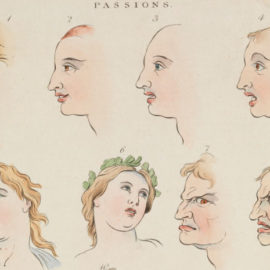

This article is an excerpt from the Shortform book guide to "Why Has Nobody Told Me This Before?" by Julie Smith. Shortform has the world's best summaries and analyses of books you should be reading.
Like this article? Sign up for a free trial here.
How often do your emotions get the best of you? Are you in control of them, or are they in control of you?
Emotions are strong. But, Dr. Julie Smith says that you can be stronger. Take control, and don’t let your emotions control you. You can take the reins by practicing mindfulness, naming your emotions, and noticing and shifting your thought patterns.
Keep reading for Smith’s practical advice on harnessing your emotions.
Don’t Let Your Emotions Control You
Smith acknowledges that letting yourself feel your emotions is difficult, as emotions can be painful and intense. Because of this, it’s important to gain tools to help you lessen your emotions and make them more manageable. Don’t let your emotions control you. Smith teaches that practicing mindfulness, accurately naming your emotions, and working with your thought patterns can help you make your emotions feel less powerful and reduce their impact on you.
Tip #1: Practice Mindfulness
Mindfulness is the practice of observing your sensations and thoughts without assessing them as good or bad and then letting them pass. You can practice mindfulness through formal meditation, or more informally while you’re walking, showering, or doing other mundane tasks. Mindfulness can help you distance yourself from your thoughts, emotions, and experiences to see them from a broader perspective.
(Shortform note: A growing body of research suggests that mindfulness practices can have significant mental health benefits such as reduced stress, anxiety, and symptoms of depression. However, despite the increasing popularity of mindfulness for improving mental health, it’s not beneficial for everyone. Some research has shown that mindfulness can cause negative side effects, including increased anxiety, dissociation, and flashbacks, with 6% of participants reporting negative side effects that lasted for more than a month. More research is needed to explain why some people experience negative side effects. However, some researchers think the effects may be triggered when people engage in mindfulness practices for too long and too often.)
Tip #2: Name Your Emotions
The words we use to describe emotions shape how we experience and make sense of the world. When we can accurately define negative emotions, we can be more flexible in responding to situations. Additionally, labeling a painful feeling helps us regulate our emotions, relieve stress, and avoid the negative effects of trauma. Emotions can be tricky to label—often, we don’t just feel one emotion at a time but a mixture of contradictory ones. Smith recommends building a nuanced emotional vocabulary for the full range of positive and negative emotions and actively using those words daily.
(Shortform note: In psychology, putting your emotions into words is known as affect labeling, and research has explored how affect labeling helps your brain manage negative emotions. Using brain imaging, one study found that when people label their emotions, it reduces the reaction of the part of the brain linked to emotions, the amygdala, to negative images, thus helping participants regulate their emotional responses.)
Tip #3: Notice and Shift Your Thought Patterns
Smith explains that our thoughts can often arouse and worsen emotions. Further, they can turn into unhelpful thought patterns in response to difficult circumstances and painful emotional states. Understanding and noticing these patterns can help you break out of them to lessen their negative impact on your emotions and moods.
These are some of the thought patterns that we tend to fall into, which can lead us to misinterpret situations and worsen our emotions and moods:
- Personalizing: We automatically make things about ourselves when we don’t have enough information to draw any conclusions.
- Broad-brushing: When one thing goes badly, we anticipate that nothing else will go right for us again.
- Black-and-white thinking: Things are either this way or that way. There’s no room for nuance, contradiction, or the unknown. Our emotional reactions become more intense because we feel situations are all-or-nothing, making the stakes very high.
- Catastrophizing: We imagine the worst-case scenario happening and believe it will happen that way.
| Cognitive Behavioral Therapy and Thought Patterns Understanding and working with our thought patterns to improve our emotional states comes from a theory and approach in psychology called cognitive behavioral therapy (CBT). In CBT, the above thought patterns, among many others, are called cognitive distortions. Cognitive distortions are incorrect or inadequate ways of thinking, and when we make decisions based on them, we tend to downplay and doubt our abilities and behave in ways that make us feel worse. CBT therapists believe that cognitive distortions begin in early childhood and can lead to conditions like anxiety and depression. CBT can help you identify cognitive distortions and learn how to change them by challenging them and replacing them with thought patterns that are more accurate. |
Do you recognize any of the four thought patterns above in your life? To bring awareness to your tendencies, Smith recommends reflecting on past experiences of thought patterns through journaling and trusted conversations with loved ones. Reflecting on the past makes it easier to see your patterns. Once you have practiced with the past, you can develop an awareness of current situations.
(Shortform note: In As a Man Thinketh, James Allen also recommends reflecting on the thought patterns you’ve fallen into in the past in order to shift them in the present, and he goes a step further by explaining that tracing your thought pattern history will motivate you to change your thoughts. This is because you’ll be able to see clearly how your faulty thinking has impacted your life. Once you see your patterns and are motivated to change, he encourages you to consistently make a conscious effort to steer your thoughts in healthier directions.)

———End of Preview———
Like what you just read? Read the rest of the world's best book summary and analysis of Julie Smith's "Why Has Nobody Told Me This Before?" at Shortform.
Here's what you'll find in our full Why Has Nobody Told Me This Before? summary:
- Practical tips for managing difficult emotions and thoughts
- Why self-compassion is key to mental health and how you can cultivate it
- How to change your relationship with failure






